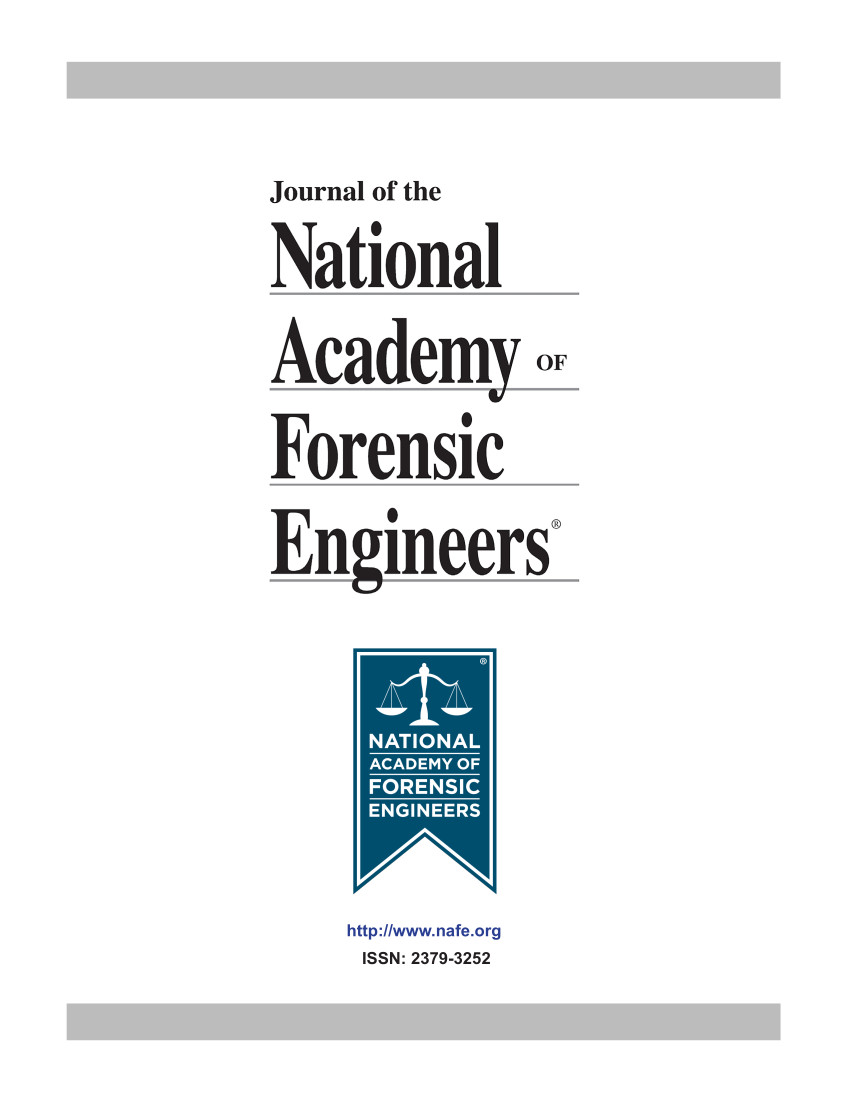Forensic Engineering Analysis Of Propeller Contact Injury
DOI:
https://doi.org/10.51501/jotnafe.v25i1.684Keywords:
Propeller boatAbstract
Human Contact With A Small Crafts Propeller Can Cause Serious Injury. Propellers Are Large, Heavy, Sharp, Very Strong, Almost Knife-Like, And Spin At High Rotational Velocities. On A Small High-Speed Recreational Craft, The Propeller Blade Tip Velocity May Be Four To Five Times The Vessel Speed. Propeller Injuries Are Generally Quite Severe, Often Involving Multiple Deep Lacerations With And Without Cortical (Bone) Damage Distributed Over A Wide Area Of The Body. There Is A Characteristic Pattern To The Geometry Of These Injuries. With A Co-Ordinate System Defined Relative To The Boat At Rest, Each Cut Corresponding To The Path Of A Propeller Blade As The Moving Water Pulls The Body Through Part Of The Area Swept By The Propeller. This Unique Pattern Is The Physical Evidence Of The Overboard Persons Trajectory And Can Yield Information About The Point Of Water Entry Relative To The Vessel. Applications Requiring High Thrust At A Relatively Low Speed, Such As Water Skiing, Wakeboarding And Parasailing, Result In Unusual Demands On Both The Propulsion System And On The Maneuvering Capabilities Of The Vessel (See Figure 1). As A Result, There Are Additional Hazards Associated With Propeller Contact That May Not Be Anticipated By Even Experienced Small Craft Operators.Downloads
Published
2008-01-01
How to Cite
Liptai, Laura L., and Kamen Paul K. 2008. “Forensic Engineering Analysis Of Propeller Contact Injury”. Journal of the National Academy of Forensic Engineers 25 (1). https://doi.org/10.51501/jotnafe.v25i1.684.
Issue
Section
Articles
License
Copyright (c) 2008 National Academy of Forensic Engineers

This work is licensed under a Creative Commons Attribution-NoDerivatives 4.0 International License.
All rights © Journal of the National Academy of Forensic Engineers.
Full statement regarding the author's license of copyright to the NAFE is shown on the Copyright section of the Submissions Page.






